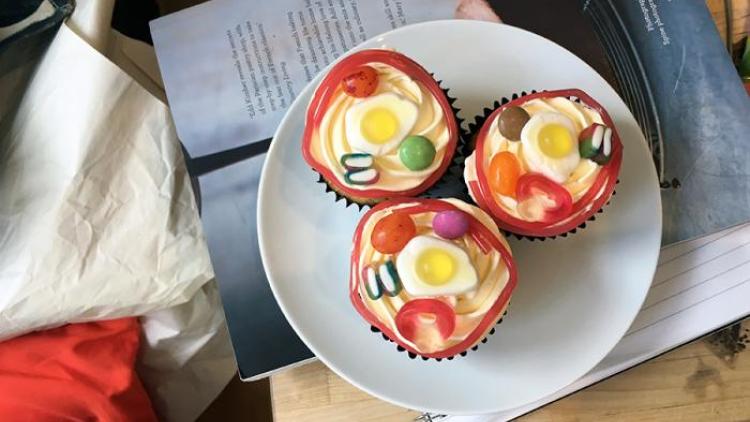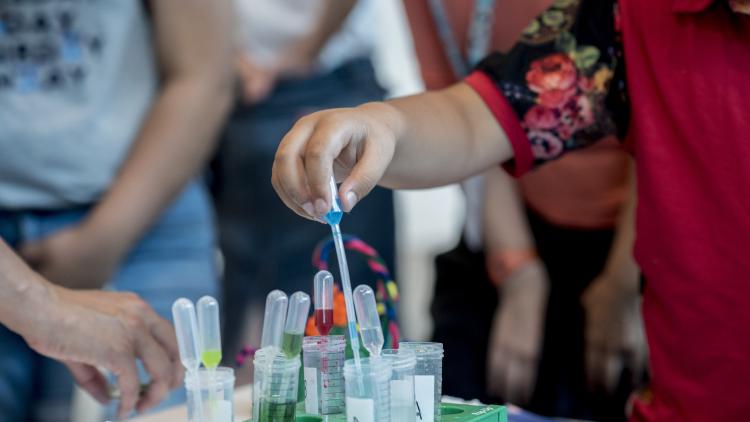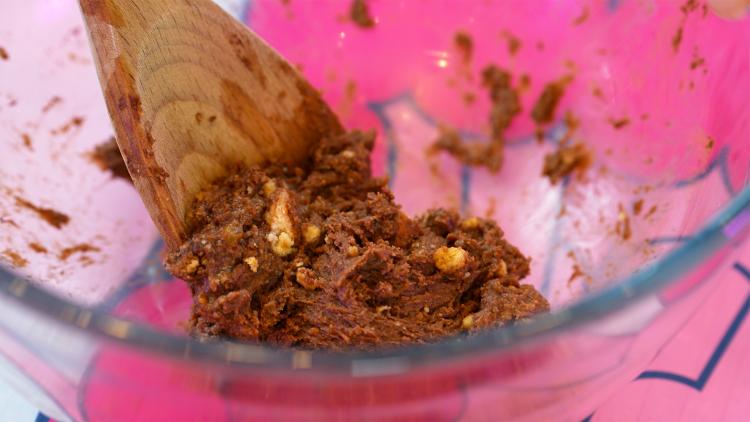Build your own blood cells
This activity will take 60 minutes, is for ages 7 to 10 with supervision needed.
In this activity, you will make some mega-sized blood cells and learn how blood cells look after us.
What you'll need
- One cup of cornflour
- Two cups of bicarbonate of soda
- One cup of water
- Tweezers
- Medium sized saucepan
- Tea towel
- Paint, nail varnish or marker pens to decorate
What to do
- Mix the corn flour, bicarbonate of soda and water in a saucepan. Cook at medium heat (with an adult supervising!) for five to ten minutes. Make sure that you're careful with the hot pan and the mixture.
- Transfer the mixture into a bowl and cover it with a damp cloth. Let it cool down until it's not too hot to handle.
- There are four different shapes that you'll be making - a red blood cell, a white blood cell, a platelet and a malaria parasite.
- For the red blood cell, roll a piece of the dough into a ball, and then flatten it in the middle to create a disk with a dip on each side.
- For the white blood cell, roll a piece of the dough into a ball, and then pinch it to create small spikes all over the surface. Tweezers or scissors might help, but make sure to do this bit with an adult supervising.
For the platelets, make a smaller piece of dough and roll it into a ball again. Flatten it into a disk and add small spikes all around the outside. - For the malaria parasite, roll a piece of the dough into a ball. Pinch one of the ends and rotate the dough.
- For all the blood cell and malaria shapes, don't forget to add a hole if you want to turn it into a key ring or bracelet.
- Leave your cells to dry for three days.
You can store any leftover dough in an airtight container and use it again. - Add some colour, you can use paint, or even nail varnish and marker pens.
You can use the cells to make a key ring, bracelet, badge, magnet, or anything else you can think of. Or you can just keep them as they are.
What’s in your blood?
Blood is a thick red liquid, which flows around our body in special tubes called blood vessels.
When you look at it blood looks like a liquid, but zoom in closer and you can see a team of cells. These all have jobs to do that keep us alive and healthy.
The three cells you make in this activity all have specialised jobs to do, which their different shapes help them achieve. They are suspended in plasma, a special liquid that carries them all around your body.
Red blood cells carry oxygen around your body to get it from your lungs to where it is needed. Their flat, concave shape gives them more surface to absorb oxygen and helps them get into the smallest parts of your body.
White blood cells eat and destroy pathogens – things such as bacteria and viruses that can harm us. Some have bodies covered in spiky molecules called antibodies that help them respond to common pathogens more quickly.
- Platelets clump together and forms scabs to stop you from bleeding if you get a cut or grazed.
Science at the Crick
The malaria parasite you also made might be small, but it is one of the deadliest pathogens in the world, with over half the world at risk of being infected by it. This single-celled organism is common in tropical areas, and is spread by mosquitos.
Scientists at the Crick are studying how the malaria parasite grows and develops, to try to find ways to treat malaria, and stop people getting infected with it. Our scientists also look at mosquito behaviour, as they are how the malaria parasite actually spreads to humans.



